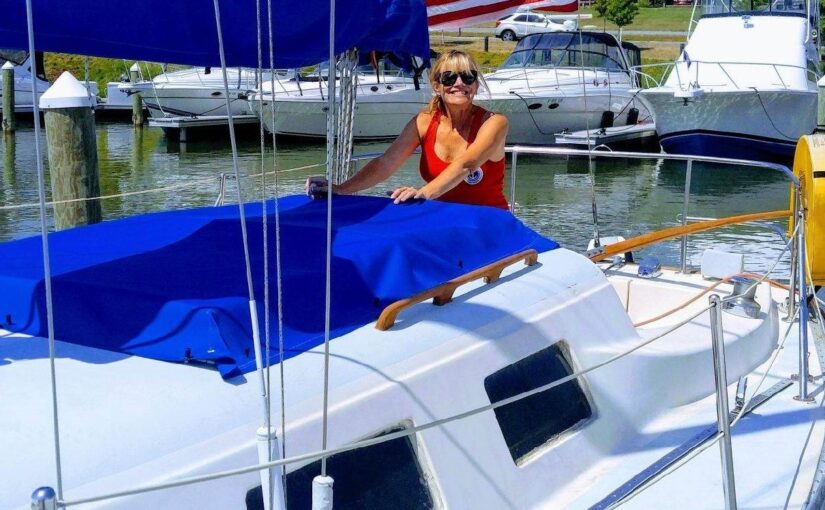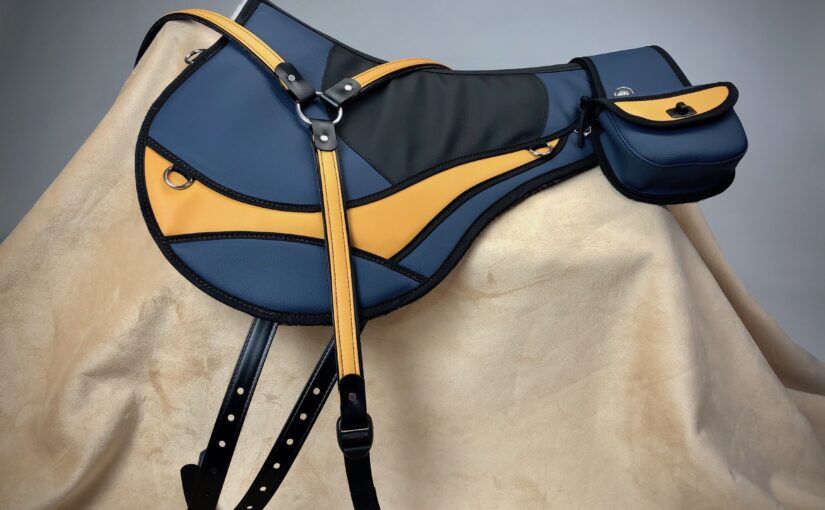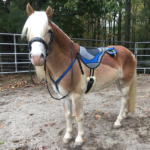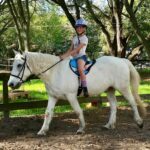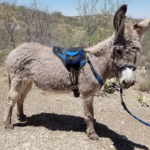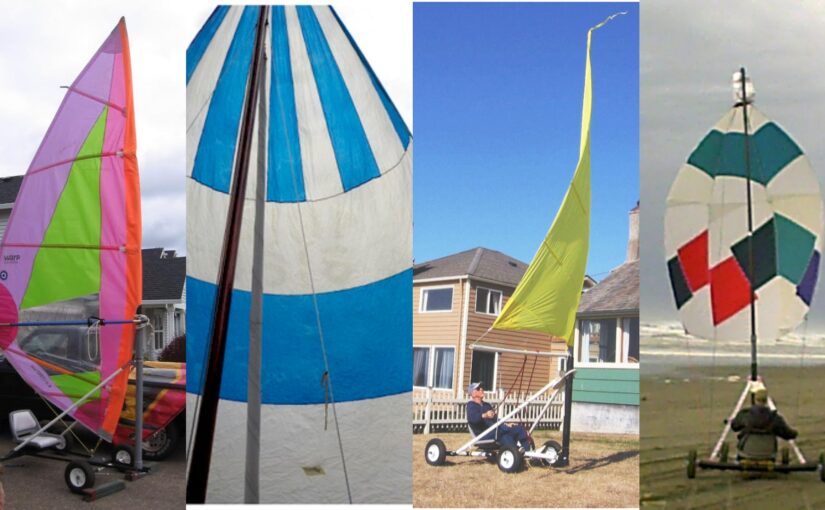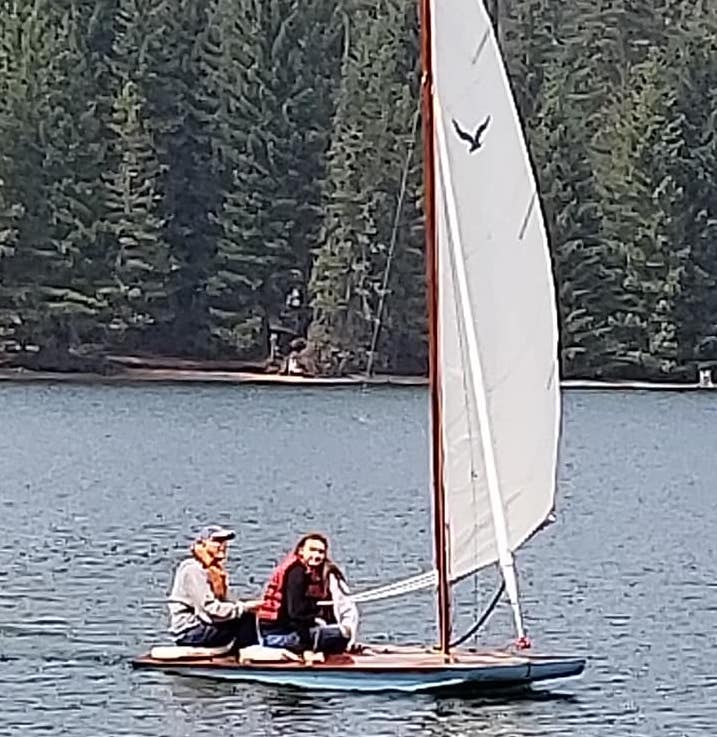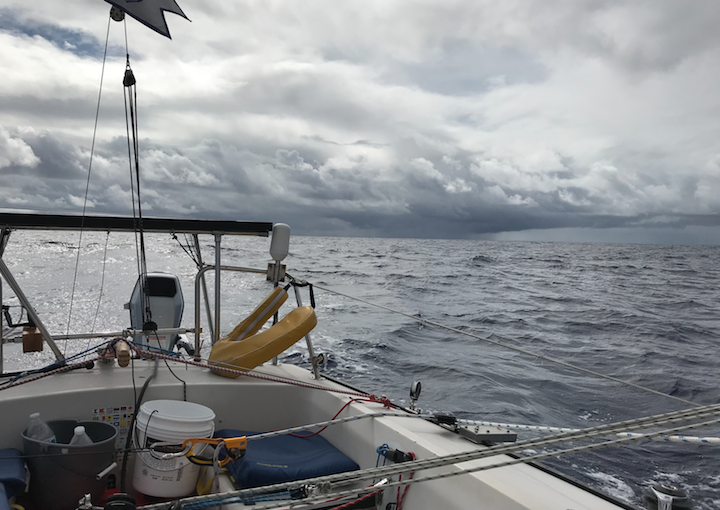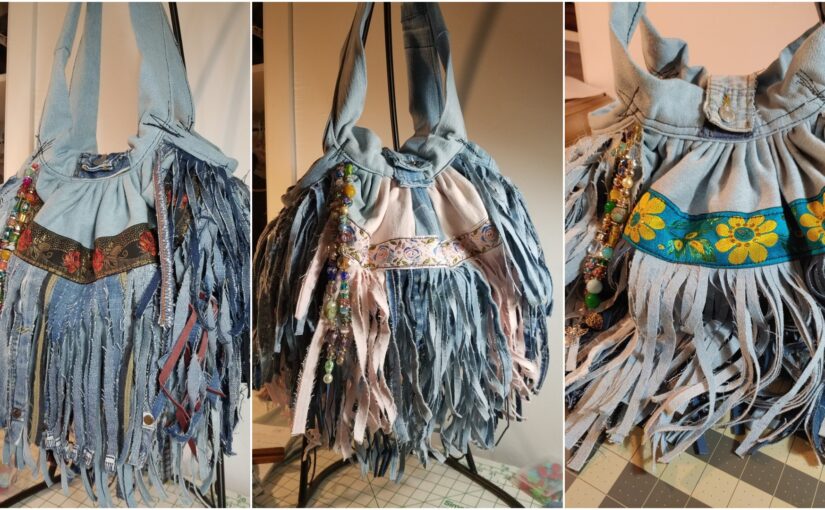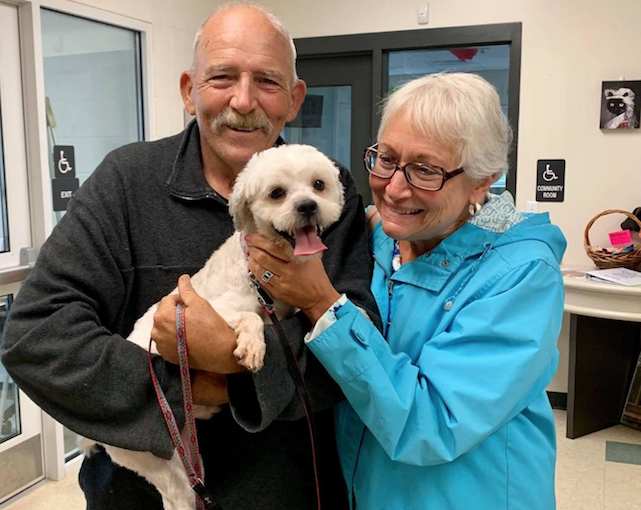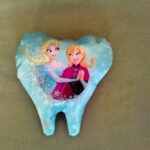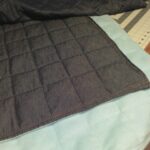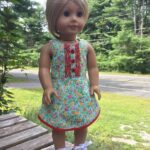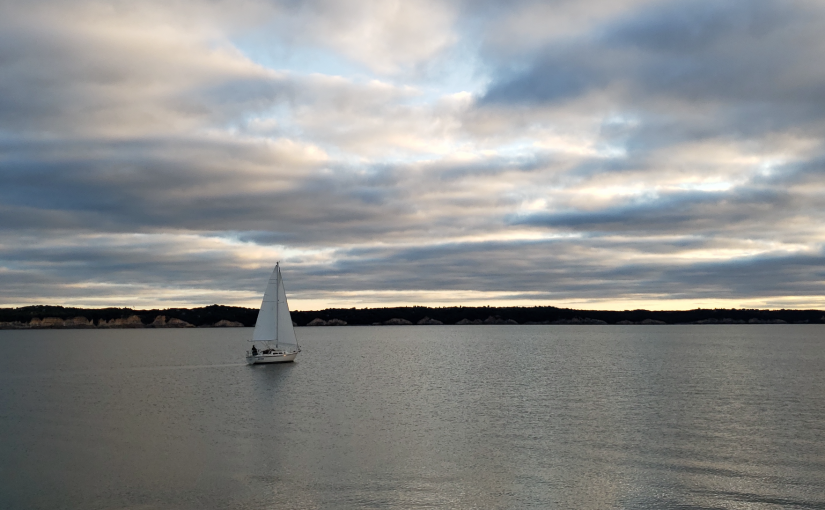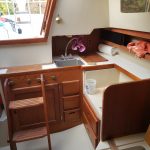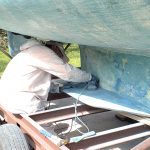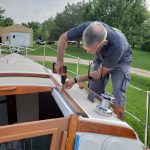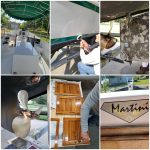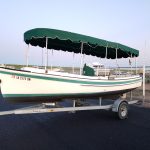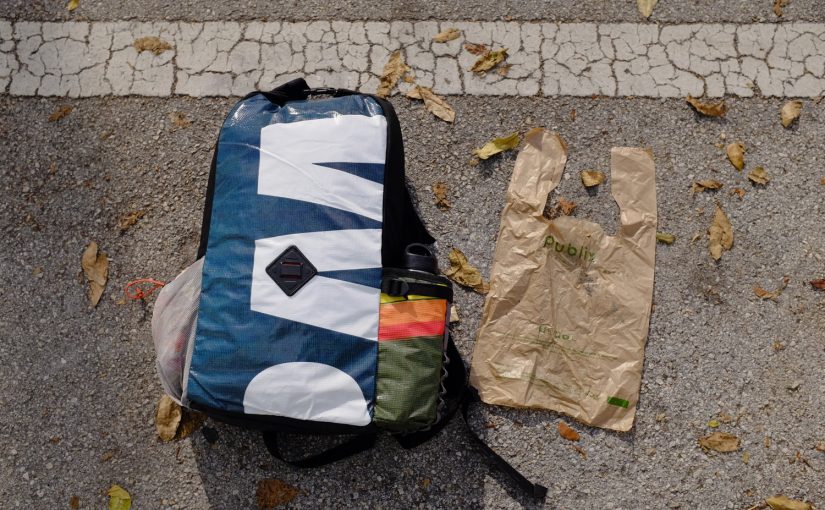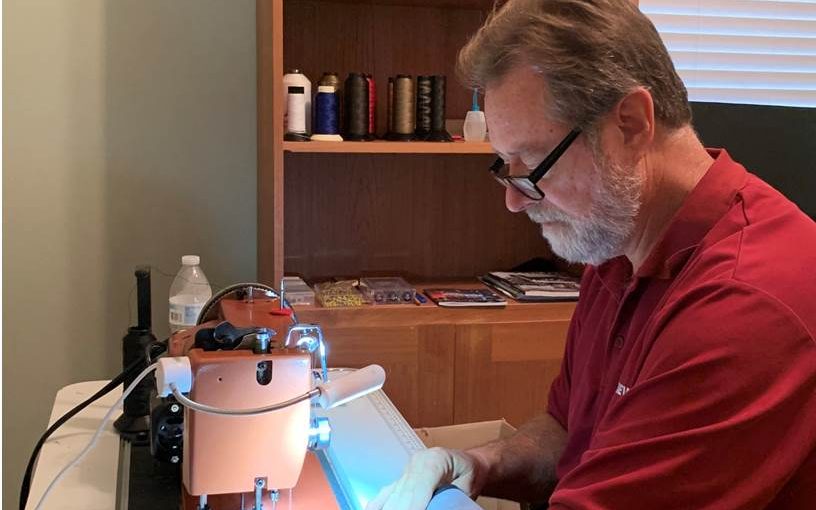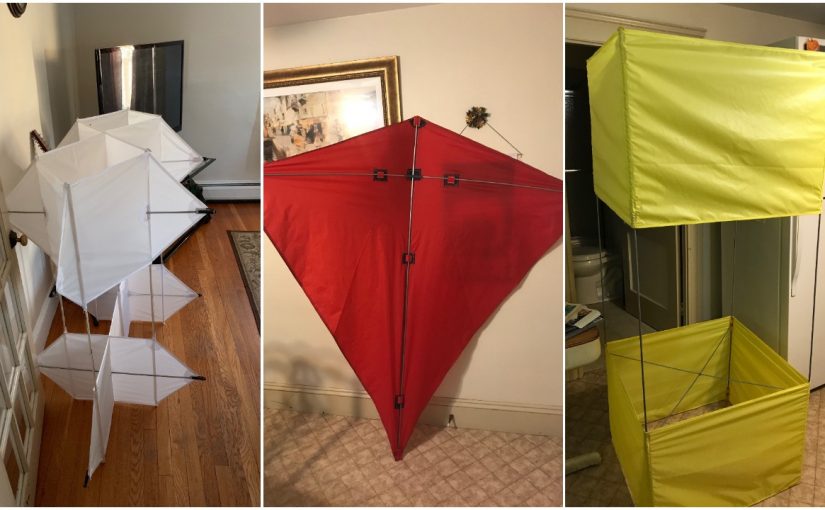If you’ve ever been dissatisfied working in the corporate world, you’re not alone. Susan Oschmann left her job at a stuffy law firm to rediscover a life that she loved and that would bring her joy, fulfillment and a much-needed sense of accomplishment. With ingenuity and great determination, she set out to start a new life and career in DIY. Keep reading to find out more about this adventurous and free-spirited sewer.
Seven years ago, Susan quit her job at a law firm and never looked back. “The day came when I decided to put my energies into myself instead of making my attorney boss look good,” she said. Susan was itching to find work that she enjoyed and that incorporated her love of boating and the marina lifestyle. One day, the idea suddenly came to her. She started her own small business traveling from marina to marina sewing canvaswork and upholstery pieces for customers’ boats.
In order to be mobile or “marina hopping,” as Susan refers to it, she needed a sewing machine that could tag along for the ride. “I found Sailrite online,” Susan explained. “I needed a machine to match my livelihood and lifestyle and was drawn to the Ultrafeed’s portability and its commercial-grade strength. I needed a machine that I could wheel down a dock to work on the back of a customer’s vessel with ease. The Ultrafeed does all this and then some! I have used it on small repairs dockside including large cockpit covers complete with binding, zippers and gaskets. It goes through all the layers seamlessly, pardon the pun!”

Susan loads up her Ultrafeed LSZ in her Jeep and off she goes marina hopping. “I service Buffalo, New York, all the way to the Thousand Islands.” The Thousand Islands are a group of more than 1,800 islands in the St. Lawrence River, part of an archipelago that straddles the U.S.-Canada border. The Ultrafeed is the perfect sewing machine for Susan and her nomadic lifestyle. It combines the mobility and easy portability required for her work, as well as the strength and dependability to power through marine canvas and upholstery fabrics.
Before she could start her business and hit the road, there was just one thing standing between Susan and this new career path: She didn’t know how to sew. So she enrolled in sewing seminars at a marine canvas sewing institute in Florida. The intense, hands-on training courses taught her everything from how to sew boat covers to biminis and dodgers, and even interior and exterior seating upholstery.
After the rigorous marine sewing courses, she was ready to put her new skills to use and start working for herself. Her mobile sewing business, Susie’s Boat-tique, specializes in fabrication and repair of marine canvas and vinyl, as well as fiberglass and gel-coat repair. Susan’s business partner, Chad Beach, handles all the fiberglass and gel-coat work. “People are really surprised at what my business does. From fiberglass and gel coat to canvas, vinyl and marine carpet, you might say we handle a boat from bow to stern and all points in between.”
Susan’s major career shift has given her the opportunity to do something she truly loves and to reconnect with her roots. “I grew up on a marina owned by my parents,” she explained. “I am a marina girl through and through.” Though her livelihood is in sewing for other people’s boats, Susan does take time to enjoy the water for herself. “I have a 1987 Baja 18-foot runabout,” she commented. “I am an avid boater and love the water. I would love to travel by boat, but my Jeep will have to do for now.”

Sewing has given Susan the opportunity to broaden her love of boating in a new and exciting way. “I love that I can make a customer’s project fit their particular need, be it cutouts around the rigging or the thickness of the foam in the cushions.” Sewing and DIY give you the ability to make a one-of-a-kind project that meets all your requirements.
Susan’s most creative and challenging project for a customer was designing a helm cover that didn’t require snap fasteners to secure it to the dash. She was working on a new boat that didn’t have snaps already drilled into the fiberglass. To avoid having to install hardware, she came up with a very clever workaround. “I made a helm cover and added dried beans in the hem to weigh it down. A helm cover is only used when the boat is docked. I call my creation the Susie’s Boat-tique Happy Helm!”
“I love being mobile, visiting all the marinas and traveling from place to place. Always traveling to fun places — I love my life on the road, or should I say on the docks!” Susan rigged up a clever portable sewing station so she can sew anywhere the wind takes her. “My rigid rolling tool case lets me roll my machine, table and tools right out to the customer’s boat.” It’s nothing but blue skies and calm seas ahead for Susan and her trusty Ultrafeed.

Who We Are
Sailrite is your one-stop DIY shop! We are a passionate crew of do-it-yourselfers who strive to equip you with the supplies and how-to knowledge you need to tackle your next project. Do you want to learn upholstery, leatherwork, canvaswork, hobby sewing, bag making or more? We have the fabric, tools, hardware, sewing machines and notions you need to master any DIY. And even if you’ve never sewn before, our tutorials and how-to videos are designed for beginners and experienced crafters alike.
Start your DIY journey today: www.sailrite.com

